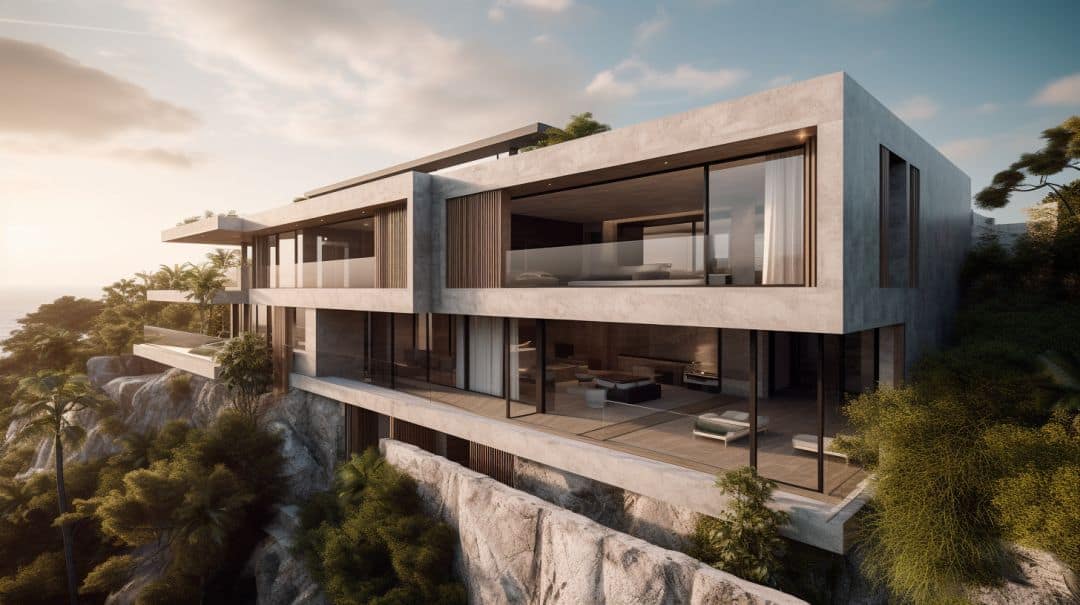Unlocking the Full Potential of Exterior Insulation and Finish Systems for Sustainable Building Efficiency
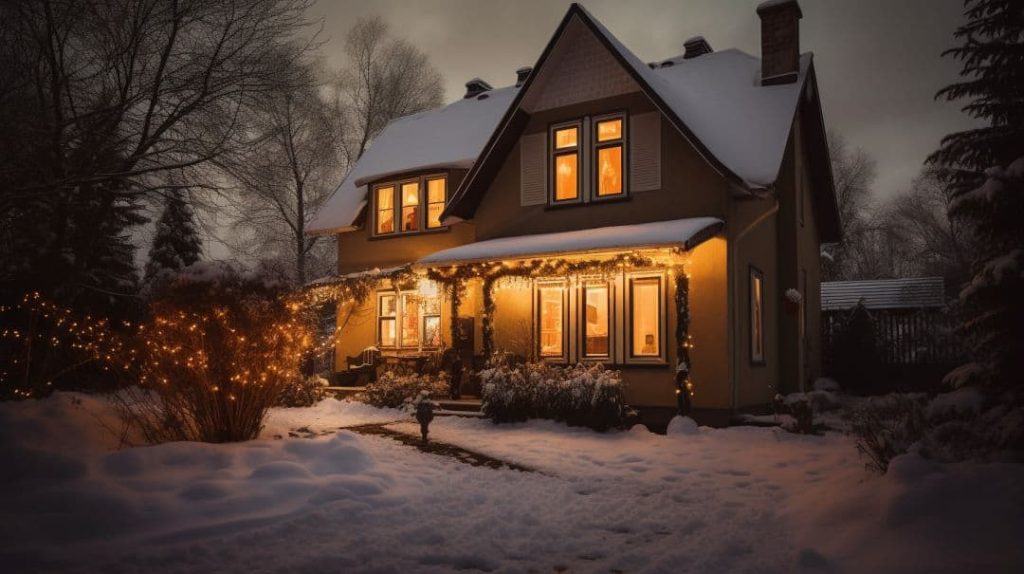
With rising energy prices and the pressing need to reduce building carbon emissions, architects and owners are seeking creative ways to maximize energy efficiency in new construction and renovations. One powerful but often overlooked strategy is the use of advanced exterior insulation and finish systems (EIFS). EIFS insulated facades provide exceptional thermal performance that can substantially cut a building’s energy use and costs. This article will examine the components, benefits, proper installation, and innovative forms of EIFS. We’ll also review a case study showing the dramatic effect EIFS can have for high-rise retrofits, potentially reducing heating and cooling loads by 30% or more.
EIFS refers to multi-layer exterior wall systems that utilize continuous insulation and advanced air sealing strategies to optimize building envelope performance. EIFS consists of foam plastic insulation boards, fiberglass reinforced base coats, adhesive layers, and durable acrylic finishes that form a protective, water-resisting facade. Compared to conventional stucco, brick, stone, or even standard framed walls with insulation, EIFS provides far superior insulation values and minimizes thermal bridging through framing members. The result is a building envelope with outstanding thermal resistance that blocks unwanted heat loss in winter and heat gain in summer.
With rising global temperatures, extreme weather events, and growing recognition of buildings’ share of energy consumption and carbon emissions, improving envelope efficiency makes environmental and economic sense. Numerous studies have shown that maximizing insulation and airtightness using systems like EIFS is often the most cost-effective way to reduce heating and cooling loads. In cold climates, insulating to Passive House standards can theoretically eliminate the need for central heating altogether. EIFS enables these dramatic performance improvements through its unique composition and properties.
When properly designed, detailed, and installed, EIFS offers exceptional steady-state and seasonal thermal performance far surpassing standard walls. In fact, the R-value of EIFS facades frequently ranges from R-20 to R-40, compared to only R-13 to R-19 for conventional 2×4 or 2×6 stud walls. This enables substantial reductions in heat loss through the building skin during cold weather. EIFS is also an ideal solution for eliminating thermal bridging through framing, windows, corners, and balconies that undermine the performance of traditional insulation. The result is superior comfort, lower heating and cooling bills, and reduced environmental impact from building operations.
Understanding EIFS Insulated Facades
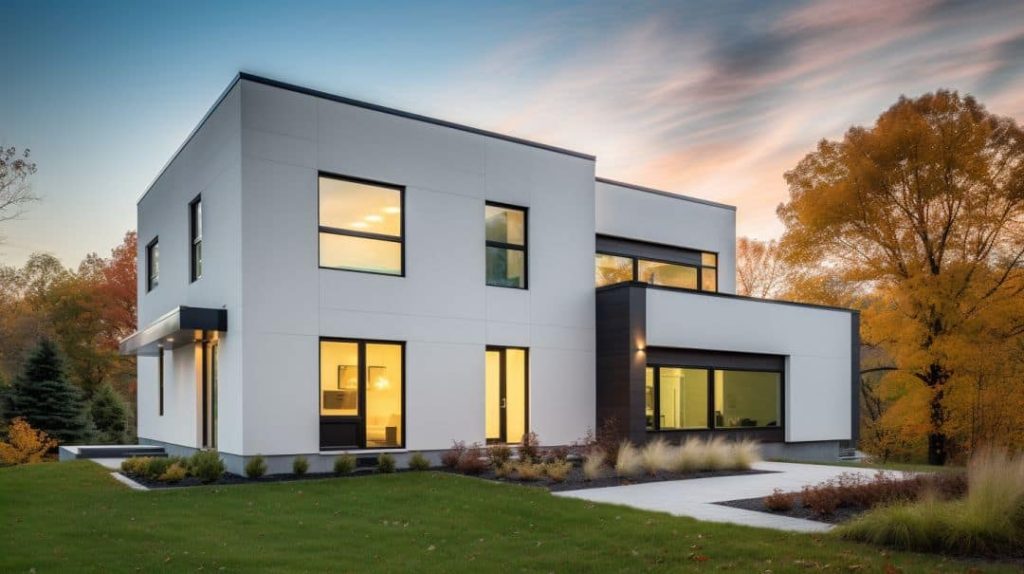
Components of EIFS
EIFS is comprised of four essential layers that provide insulation, weather protection, and aesthetics. The starting point is the insulation board, made from expanded polystyrene (EPS) foam. These boards come in various thicknesses from 1 to 4 inches to achieve the desired R-value. Next, a base coat is applied, consisting of fiberglass reinforcing mesh embedded in an acrylic and cement mixture. This provides bond strength, impact resistance, and crack control. A primer coat bridges the base coat and finish coat. Finally, a textured acrylic or polymer finish coat is applied, which comes in unlimited colors and textures. The finish coat protects against weathering and allows for creative aesthetics. Some systems also incorporate drainage mats and enhanced reinforcing meshes. All components must be properly integrated to achieve EIFS’s energy efficiency and performance.
Structural and Aesthetic Advantages
Unlike stucco, EIFS is not a structural cladding but rather provides a lightweight, insulating skin on the exterior of the structural frame. However, the fiberglass mesh reinforcing and expanded polystyrene rigidity provide enhanced durability and wind resistance. EIFS won’t rot, warp, or crack like wood or fiber cement. In terms of aesthetics, EIFS offers a sleek, modern look, with numerous finish options. Decorative trim profiles can be incorporated, along with curved, smooth shapes. This creative flexibility combines aesthetics with high performance.
Energy Efficiency and Comfort Benefits
The core advantage of EIFS is enhanced thermal insulation and airtightness of the building envelope. The EPS insulation minimizes conductive heat loss ten times better than brick or concrete. The layered construction also eliminates thermal bridging and air leakage far better than conventional walls. The superior insulation capacity cuts winter heat loss through walls by up to 80%. This in turn slashes heating energy use and improves interior comfort through the elimination of drafts and cold surfaces. Proper EIFS installation also minimizes summer cooling loads.
Condensation and Fire Resistance
A common misconception is that the exterior insulation of EIFS precipitates moisture issues. In fact, properly integrated EIFS prevents condensation by keeping wall cavities warm. The airtight construction also prevents moist interior air from contacting the sheathing. Correct detailing, vapor retarders, and drainage provisions are still essential. In terms of fire safety, EIFS is rated as a non-combustible material and does not pose fire risks if correctly installed.
Achieving Energy Efficiency with EIFS

Thermal Performance and Insulation
The exceptional thermal performance of EIFS derives from several factors:
- Thick continuous insulation layer of EPS foam, avoiding gaps
- High insulation value of EPS, ranging from R-4 to R-5 per inch
- Insulation layer exterior to structural elements, eliminating thermal bridges
- Multiple bonded lamination layers preventing air infiltration
Typical EIFS R-values range from:
- R-22 for 2-inch-thick EPS insulation
- R-30 for 3-inch thickness
- R-40 for 4-inch and greater thicknesses
This far surpasses standard wood or steel-framed wall insulation. Specifying thick EPS boards optimized for local climate maximizes insulation capacity.
Reduction of Thermal Bridging
EIFS minimizes thermal bridges – the major weakness of traditional walls. Bridges allow heat loss at framing, openings, and transitions. With EIFS:
- Insulation placed outward of all framing avoids bridging
- Continuous insulation coverage eliminates gaps at corners, joints
- Insulated window details and balcony slabs prevent heat loss
Proper alignment of insulation boards and detailing prevents thermal bypass.
Lowering Air Infiltration
EIFS provides an exceptionally airtight building envelope through:
- Multiple layered lamination bonds reduce air leakage
- Acrylic finish coat seals the exterior surface
- Precise detailing at openings and penetrations
Blower door testing confirms EIFS constructions achieve air tightness of 0.5 to 1.5 air changes per hour at standard testing pressures. This minimizes infiltration heat losses, drafts, and humidity entry.
Maximizing Energy Savings with EIFS

Lowering Heat Leakage and Energy Loss
Properly designed EIFS walls can reduce winter heat loss by up to 80% compared to conventional constructions. This directly lowers heating equipment sizing and energy consumption. Key factors include:
- High-performance windows: Triple pane low-E windows with insulated frames
- Optimized insulation thickness: Adequate thickness for climate; up to R-40
- Minimized thermal bridges: Attention to detail at balconies, corners, openings
- Integrated air barrier: Multi-stage adhesive and coating lamination
With these strategies, EIFS enables ultra-low energy buildings to approach Passive House standards.
Improving Building Envelope Performance
The critical element for efficiency is the proper integration of the EIFS components into a high-performance envelope system. Crucial factors include:
- Vapor control layers: Proper design of moisture and air barriers
- Flashing details: Correct shingle lapping and drainage provisions
- Joint detailing: Sealing of insulation board joints
- Window connections: Thermal break details at openings
- Penetration sealing: Air-tight alignment of vents, pipes, and utilities
Design Strategies for Thermal Control
The building design can further optimize EIFS efficiency through concepts like:
- Window orientation for passive solar heat gain
- Minimizing window ratios on cold exposures
- Double wall façades to increase insulation thickness
- Thermal zoning of building massing
- Passive ventilation schemes to reduce cooling loads
Minimizing Heat Flow Through Air Barriers
Advanced air barrier designs and compartmentalization using EIFS further reduce heat loss and improve comfort:
- Exterior sheathing membranes provide airtightness
- Joint-sealing tapes at board joints
- Spray foam perimeter seals at openings
- Vestibule compartmentalization
EIFS and Aesthetic Appeal
Blending Beauty with Efficiency

One of the major advantages of EIFS technology is its ability to blend dramatic energy efficiency improvements with enhanced aesthetic appeal. While early EIFS applications erred toward bland or boxy appearances, modern design approaches highlight the creative potential.
EIFS offers a streamlined, contemporary look that creates a sleek unified appearance. The thick insulation layer provides a smooth, continuous surface transition from walls to openings to protrusions. Window and door details can be cleanly integrated without complex trims. The acrylic and polymer finishes come in unlimited colors, textures, and even metallic or pearlized coatings for dynamic effects.
Beyond basic colors, decorative goat, fish scale, adobe, and stone patterns can simulate traditional facades. Bold geometric patterns and super graphics can make dramatic statements. Column details, cornice profiles, window surrounds and parapet caps can be incorporated for visual interest. This flexibility enables both aesthetic enhancement and high performance.
Options for Customization and Design Flexibility
EIFS provides almost limitless options for shaping thermal insulation into creative forms. The EPS insulation boards can be:
- Routed and carved to create three-dimensional patterns
- Textured or contoured for dynamic tactile effects
- Beveled, profiled, or stepped to articulate facades
- Folded into soft curves or crisp lines
- Used to clad column forms, cornices, and parapets
- Formed into screen walls, sun shades, and louvers
- CNC milled from 3D models for organic freeform shapes
- Used as a substrate for tile, metal, or glass overlays
This flexibility supports highly expressive building forms. Photos, graphics, and logos can be digitally mapped onto facades. Bold juxtapositions of shape, texture, and color engage viewers. The forms not only look dynamic, but also maximize thermal performance.
Consideration for EIFS Installation
Finding a Qualified EIFS Contractor
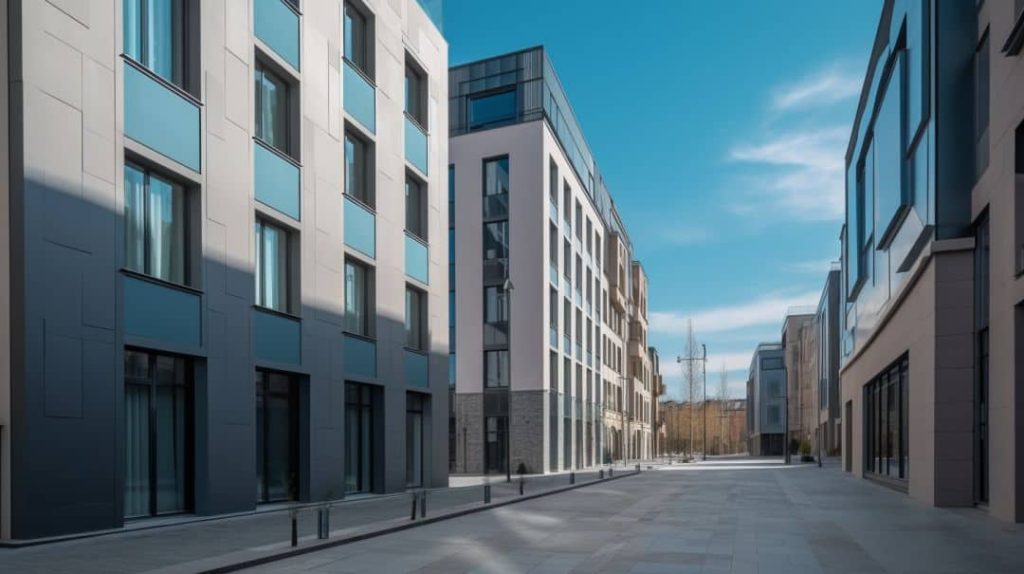
Proper design and installation are imperative to achieve the full benefits of EIFS technology. Unlike basic stucco cladding, EIFS is a specialized wall system requiring experience to integrate correctly. The ideal contractor will have expertise in:
- Moisture control design and drainage provisions
- Thermal modeling to optimize insulation thicknesses
- Detailing critical transitions, joints, openings, and penetrations
- Coordinating window installation and flashings
- Proper waterproofing membranes and vapor retarders
- Base coat mixing and application for crack prevention
- Installation of mesh reinforcements and proper curing
- Applying finish coats to achieve desired aesthetic effects
Reputable EIFS contractors will have manufacturer training and certification along with a portfolio of successful projects. Seeking contractor references from prior clients is highly recommended.
Understanding the Difference Between EIFS and Stucco
While EIFS is sometimes referred to as “synthetic stucco”, it has major differences from traditional stucco:
- EIFS incorporates continuous insulation while stucco is not insulative
- EIFS relies on the structure for support unlike self-supporting stucco
- EIFS acrylic finishes have superior weatherproofing compared to basic stucco
- EIFS integrates reinforcing meshes providing far greater impact resistance
- EIFS minimizes air infiltration much more effectively than stucco
- Multi-stage EIFS installation requires specialized contractor skills
- Long-term performance requires different repair approaches
These differences mean EIFS cannot be approached like a basic stucco cladding. Expertise in EIFS-specific detailing and installation practices is essential.
Proper Repair and Maintenance of EIFS
While durable, EIFS facades do require occasional maintenance and repair to maximize longevity:
- Annual inspections check for cracks, seal failures, water issues
- Acrylic finishes may need recoating every 7-10 years
- Minor cracks can be sealed with elastomeric patch compounds
- Damaged areas may require a base coat and mesh repairs
- Aesthetic alterations involve resurfacing with a new finish coat
- Moisture issues require investigation of leaks or flashing failures
- Periodic caulking, sealing, and making repairs when needed
With proper maintenance, EIFS facades can last 25 years or longer while maintaining visual appeal and energy performance.
Innovative EIFS Technologies
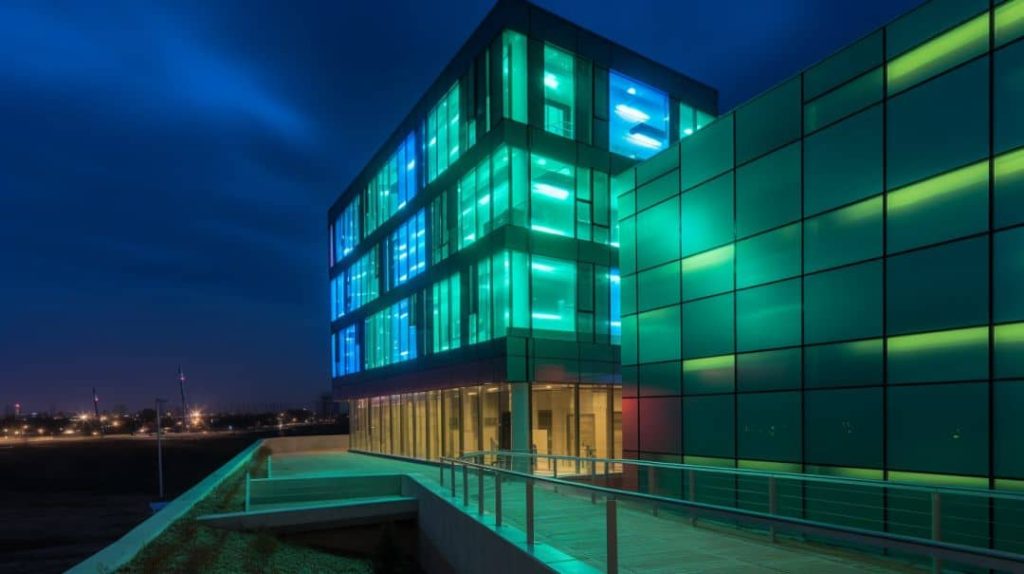
Advancements and enhancements to EIFS technology continue to expand its thermal efficiency potential and applications. Two examples of innovative EIFS-related products are vacuum-insulated panels and composite insulation siding panels.
Vacuum Insulation Panels
Vacuum insulation panel (VIP) technology allows substantially higher insulation values for a given thickness. VIPs consist of a porous inner core encased in a sealed barrier material from which the air has been evacuated. The vacuum eliminates conduction and convection heat transfer, achieving an insulation value of R-30 per inch or more.
While thinner than conventional EIFS insulation, VIPs offer new possibilities:
- Allow thicker insulation levels in confined spaces like window reveals and balcony buildouts
- Enable slimmer, thermally-broken balcony slab designs
- Reduce thermal bridging around beams and columns
- Improve insulation continuity at corners and wall intersections
- Limit insulation thickness where space constraints exist
VIPs represent an exciting advance in insulation capacity for EIFS applications.
Composite Insulation and Vinyl Siding
Seeking easier installation along with efficiency, manufacturers have developed composite panels joining EPS insulation board to vinyl siding surfaces. These pair the durability and aesthetics of vinyl with effective continuous insulation.
Benefits of composite EIFS-vinyl systems include:
- Simplified installation process compared to multi-stage EIFS
- Wider range of color and pattern options from vinyl finishes
- Enhanced hail and impact resistance from vinyl over acrylic coatings
- Insulation and cladding installed in one step
- Continuous insulation unbroken by cladding attachments
- Cost savings from quick single-component installation
The composite technology bridges the gap between EIFS and conventional vinyl siding.
Conclusion

As energy efficiency becomes increasingly crucial for environmental and economic sustainability, advanced wall systems like EIFS present a compelling option to transform building performance. EIFS enables architects, contractors, and owners to achieve dramatic reductions in heating and cooling loads, lower energy costs, enhance durability, and provide aesthetic appeal.
Compared to standard wood or steel-framed wall assemblies, EIFS provides superior steady-state and seasonal R-values along with exceptional air-tightness through its multi-layer construction. This directly translates into reduced heat loss, smaller equipment sizing, improved comfort, and lower energy bills. EIFS minimizes thermal bridging, the major weakness of conventional wall insulation strategies.
With proper design, detailing, vapor control layers, and integration by skilled contractors, EIFS provides a smart solution to optimize envelopes for both new and existing builds. Ongoing enhancements such as vacuum-insulated panels and composite EPS-vinyl products further expand EIFS technology for both efficiency and ease of installation.
For architects, contractors, and owners seeking to maximize energy savings, comfort, durability, and aesthetics, EIFS deserves consideration as a high-performance building envelope solution. To explore how EIFS can benefit your next commercial, institutional, or residential project, contact the experts at Indiana Wall Systems at (765) 341-6020 for an insulation performance analysis and estimate. Reduce your energy costs and environmental impact with advanced EIFS technology today.


